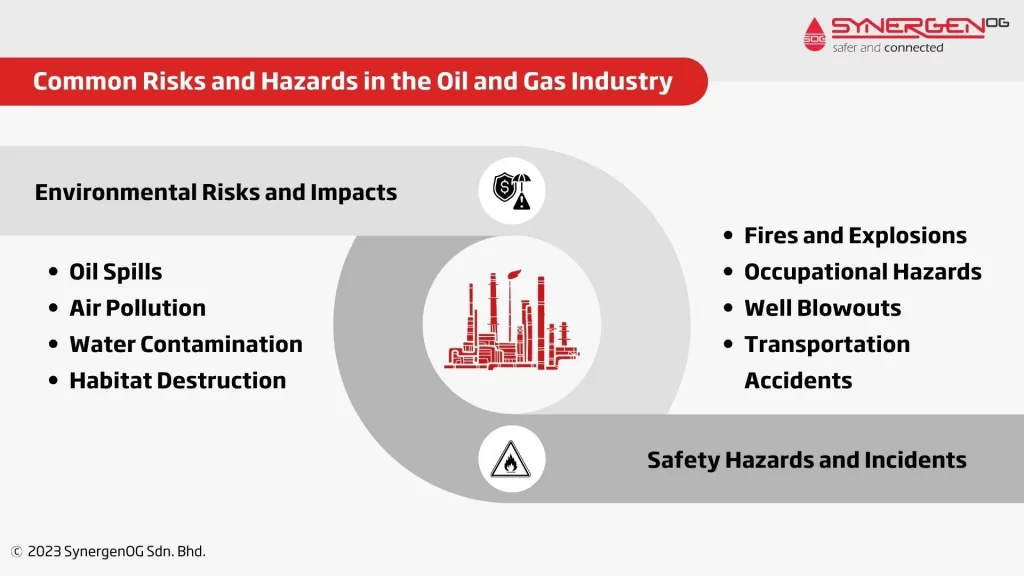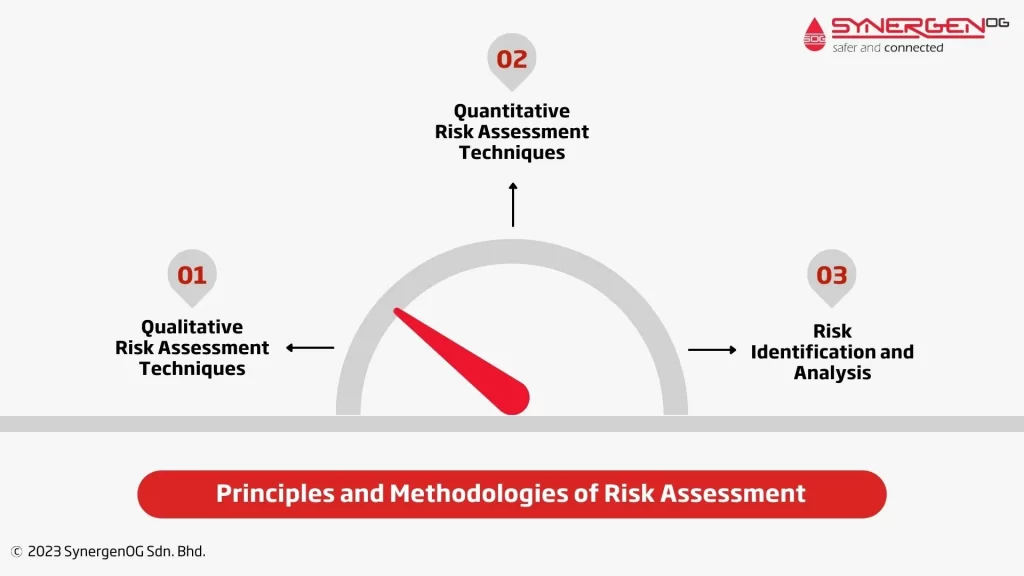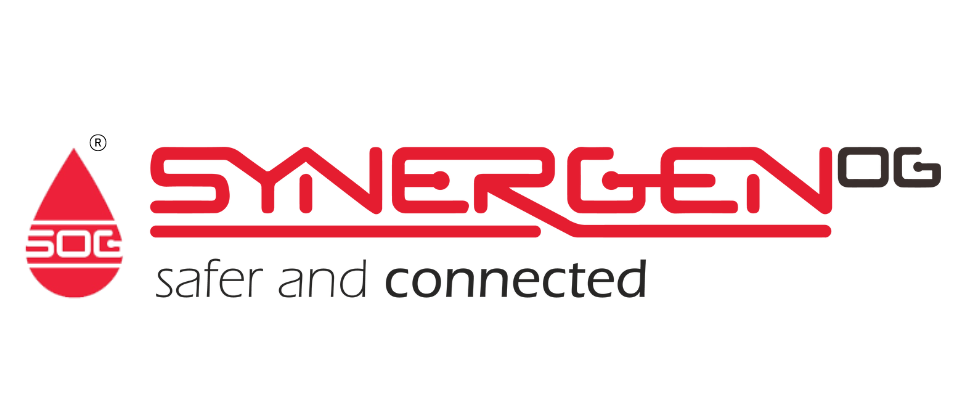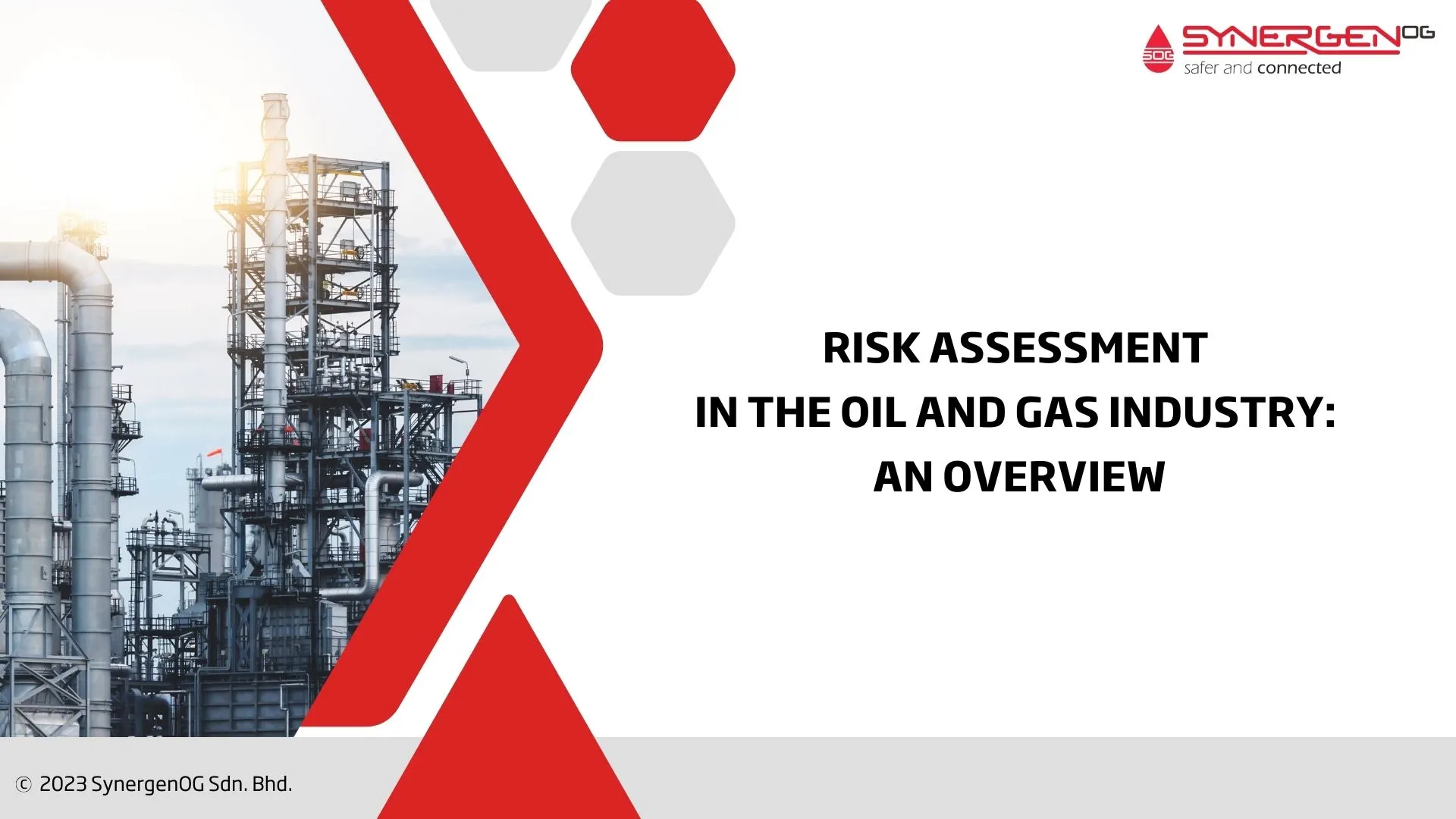| Summary: This article focuses on providing comprehensive guidance on the risk assessment process in the oil and gas industry, including the identification and analysis of common risks and hazards. It also highlights best practices, regulatory compliance, and industry standards, and emerging technologies for effective risk assessment. |
Risk assessment is an integral part of the oil and gas industry that aims to identify, evaluate, and mitigate potential hazards that may arise during the exploration, production, transport, and storage of oil and gas. The aim is to ensure the safety of the workforce, protect the environment, and prevent any financial losses that may arise due to accidents or incidents.
Importance of Risk Assessment in Oil & Gas Industry
The oil and gas industry is known for facing several risks both in terms of safety and environmental impact. Some of the typical risks/hazards that are associated with the industry are,
- Minor oil spill (Spillage in Crude Oil Storage / Spillage while Crude Oil production)
- Major oil spill
- Blow out
- Hydrogen Sulphide release
- Pipeline leaks
To address these risks, companies must implement a risk assessment process that helps identify possible hazards, assess their consequences, and develop risk management plans to reduce or eliminate the identified risks.
Risk Assessment Process – The 5 Steps
The process of risk assessment typically involves five key steps, also known as 5 principles of risk assessment. They are,
- Risk Identification
- Risk Analysis
- Risk Evaluation
- Risk Control
- Monitoring
The first step is identifying potential hazards or risks, including both safety and environmental risks. The second step involves assessing the likelihood and consequences of each identified hazard. The third step consists of evaluating the risks by comparing their likelihood and potential impact to specific criteria or guidelines. The fourth step is implementing risk control measures to reduce the risks to acceptable levels. Finally, the fifth step is monitoring and reviewing the effectiveness of the risk management plan.
Common Risks and Hazards in the Oil and Gas Industry

The oil and gas industry is faced with various risks and hazards that can have a significant impact on the environment, as well as pose safety concerns for workers. Two key areas of concern are environmental risks and safety hazards.
Environmental Risks and Impacts
- Oil Spills: The accidental release of oil into the environment can have devastating consequences. Spills can occur during transportation, storage, or exploration and can result in the contamination of soil, water bodies, and marine ecosystems. The long-term effects of oil spills can be severe, including damage to wildlife, ecosystems, and local economies.
- Air Pollution: The extraction and burning of fossil fuels, such as oil and gas, contribute to air pollution. Emissions from oil refineries, power plants, and transportation vehicles release greenhouse gases and other pollutants, leading to smog, climate change, and negative impacts on human health.
- Water Contamination: The extraction and processing of oil and gas can potentially contaminate water sources. The use of chemicals during hydraulic fracturing (fracking) for extracting oil and gas can contaminate groundwater if not handled properly. Water pollution can harm aquatic life and impact the availability of clean drinking water for communities.
- Habitat Destruction: Oil and gas exploration and production activities often require the clearing of land and the construction of infrastructure. This can lead to habitat destruction, fragmenting ecosystems and threatening biodiversity. In sensitive areas like wetlands or protected habitats, the impact can be particularly significant.
Safety Hazards and Incidents
- Fires and Explosions: The oil and gas industry involves the handling and processing of highly flammable materials, making them susceptible to fires and explosions. Factors such as equipment malfunctions, human errors, or natural disasters can lead to catastrophic accidents with the potential for loss of life, injuries, and property damage.
- Occupational Hazards: Working in the oil and gas industry involves various occupational hazards. Workers are exposed to risks such as falls from heights, confined space hazards, exposure to hazardous chemicals, and heavy machinery accidents. Proper safety training and equipment are essential to minimize these risks.
- Well Blowouts: During drilling operations, well blowouts can occur when the pressure control measures fail, leading to the uncontrolled release of oil or gas. Blowouts can result in significant environmental damage, loss of life, and have long-lasting impacts on local communities.
- Transportation Accidents: The transportation of oil and gas via pipelines, tankers, or trucks poses inherent risks. Accidents during transportation can result in spills or explosions, causing harm to both human life and the surrounding environment.
Principles and Methodologies of Risk Assessment

Risk assessment in the oil and gas industry aims to provide decision-makers with information on the likelihood and consequences of different risks to support informed decision-making and risk mitigation strategies.
Principles and methodologies of risk assessment encompass qualitative and quantitative techniques, as well as risk identification and analysis.
1. Qualitative Risk Assessment Techniques
In situations where a business has only a limited number of hazards or they are relatively uncomplicated, such as in many small enterprises, it is suitable to conduct a basic qualitative risk assessment.
- Qualitative risk assessment involves a subjective evaluation of risks based on key characteristics such as severity, likelihood, and impact.
- It relies on expert judgment, experience, and knowledge to assess risks without assigning specific numerical values.
- Common qualitative techniques include risk matrix analysis, hazard and operability (HAZOP) studies, and failure mode and effects analysis (FMEA).
- Qualitative risk assessment techniques are useful when limited data is available or when a quick initial evaluation is needed.
Read: Process Safety Metrics for Incident Prevention and Performance Enhancement
2. Quantitative Risk Assessment Techniques
A more sophisticated and developed risk assessment process is required for large and hazardous undertakings.
- Quantitative risk assessment involves the use of quantitative models and data to determine the probability and magnitude of risks.
- It employs mathematical and statistical analysis to provide a more precise and objective assessment of risks.
- Quantitative techniques include fault tree analysis (FTA), event tree analysis (ETA), Monte Carlo simulation, and probabilistic risk assessment (PRA).
- Quantitative risk assessment techniques often require more data, resources, and expertise, but they can provide detailed insights into risk probabilities, frequencies, and potential consequences.
Also Read: How to Conduct a Process Hazard Analysis: Methods & Steps to Follow
3. Risk Identification and Analysis
Risk identification is the process of identifying potential risks that could have an impact on a system, project, or activity. It involves systematically identifying hazards, vulnerabilities, and potential failure points.
Risk analysis involves analyzing identified risks to determine their potential consequences and the likelihood of occurrence.
It includes evaluating the severity and impact of risks, assessing their frequency or probability, and estimating the potential losses or damages.
Best Practices for Effective Risk Assessment
There are two important aspects of best practices for risk assessment – regulatory compliance and industry standards, as well as implementing risk management systems.
1. Regulatory Compliance and Industry Standards
Adherence to regulatory requirements is crucial in conducting risk assessments. Organizations should be aware of applicable laws, regulations, and guidelines related to risk assessment in their specific industry or jurisdiction.
Compliance with regulatory requirements helps ensure that risks are appropriately identified, assessed, and mitigated according to established standards.
Industry standards such as ISO 20815: 2008 and OSHA provide additional guidance and benchmarks for risk assessment practices. Following recognized industry standards ensures that organizations are applying best practices and aligning with industry norms.
Below are some of the most frequently cited standards in the Oil and Gas industry from OSHA.
- Oil and Gas Field Exploration Services (NAICS Code 213112)
- Oil and Gas Field Services, Not Elsewhere Classified (NAICS Code 213112)
- Oil and Gas Field Services Industry Group (NAICS Code 213111)
- Crude Petroleum and Natural Gas (NAICS Code 211111)
- Drilling Oil and Gas Wells (NAICS Code 213111)
2. Implementing Risk Management Systems
Establishing a robust risk management system is essential for effective risk assessment. Below are the actions involved in implementing risk management systems.
- Develop a clear risk management policy and framework that outlines the objectives, scope, roles, and responsibilities related to risk assessment.
- Incorporate risk assessment as a formal process within the organization’s overall risk management system.
- Define and document the methodology, criteria, and techniques to be used in risk assessment, including whether qualitative or quantitative methods will be employed.
- Ensure that the risk assessment process is transparent, well-documented, and consistently applied across the organization.
- Incorporate risk assessment as an ongoing process and integrate it into regular organizational activities, such as project planning, decision-making, and performance monitoring.
- Promote a risk-aware culture within the organization, encouraging employees at all levels to report and communicate potential risks and participate in risk assessment activities.
- Regularly review and update risk assessment processes to incorporate new information, changing circumstances, and lessons learned from previous risk assessments.
- Implement appropriate risk mitigation measures based on the outcomes of the risk identifications to reduce potential adverse impacts.
Future Trends and Emerging Technologies in Risk Assessment
Risk assessment processes are constantly evolving, and emerging technologies are playing an increasingly significant role in enhancing risk assessment.
This section discusses two major future trends in risk assessment: the role of artificial intelligence (AI) and data analytics, as well as the incorporation of predictive modelling and scenario analysis.
Also Read: The Future of Process Safety Management: Trends and Technologies
Role of AI and Data Analytics in Risk Assessment
AI is useful for identifying, assessing, and prioritising risks by analyzing historical data, monitoring real-time data, and detecting potential risks more efficiently, which sometimes humans cannot do.
Data analytics can help identify and manage risk by analyzing data from various internal and external sources.
AI and data analytics can together aid in the development of predictive models and scenario analysis to better understand and mitigate potential risks.
Incorporating Predictive Modelling and Scenario Analysis
Predictive modelling involves the use of statistical techniques and machine learning algorithms to predict the likelihood and impact of future risks and events in relation to past events.
Scenario analysis involves developing hypothetical scenarios and examining the potential outcomes to better understand the likelihood and impact of potential risks and events.
Thereby, both of these techniques can provide valuable insights into the potential consequences and likelihood of various risks and events, allowing organizations to make more informed decisions and implement effective risk mitigation strategies.
How does SynergenOG facilitate efficient Risk Assessments?
SynergenOG offers a wide range of core services to ensure process safety and technical risk assessment. Our team of industry experts specializes in process safety management, technical risk assessment, loss prevention, operational safety, and engineering training. We leverage cutting-edge technology and adhere to international standards to deliver top-quality outcomes for our clients.
At SynergenOG, we prioritize operational excellence and work proactively to prevent losses from hazardous activities. Our software solutions, including eSafetyCase, ActSYN, and SYNAC&E, streamline and enhance risk management processes.
If your organization is seeking a dependable partner for risk assessment, we can assist you in assessing and mitigating risks. Contact us today.
Conclusion
By following regulatory compliance, industry standards, and implementing robust risk management systems, organizations can conduct thorough and transparent risk assessments.
Additionally, leveraging emerging technologies like AI and data analytics, and incorporating predictive modelling and scenario analysis, can enhance risk assessment practices. As businesses face evolving risks, a proactive and comprehensive approach to risk assessment is essential in reducing the likelihood and impact of adverse events.
FAQ - Risk Assessment in Oil & Gas Industry
- What are the elements of a risk assessment?
Elements of risk assessments are:
- Identify Hazard
- Assess Hazard
- Control Risks
- Review Risk
- What are the principles of risk assessment?
Hazard Identification (HAZID), Assessment of Hazard and Risk, Control of Risk, and Review of the control effectiveness are the principles of Risk Assessment.
- What are the benefits of risk assessment?
Some of the benefits of Risk Assessment include maximising safety at minimum cost, helping to aid in decision making, calculating risk exposure and insurance requirements, as well as fulfilling certain legal requirements.
- When should you do a risk assessment?
Risk assessment can be conducted following the identification of major accident hazards within the facility. The Risk Assessment can be revisited in the event of a major change such as new machines, substances, and processes that could potentially lead to a major accident.
- What is quantitative risk assessment?
Quantitative Risk Assessment (QRA) is a formal and methodical method to estimate the likelihood and consequence of potential hazards that could lead to major accidents. The output from this assessment is expressed quantitatively as a risk to personnel/human, environment, or financial loss. Critical assumptions and risk driving elements are also identified to assess the robustness and validity of the results.
- What are the types of quantitative risk assessment?
There are many types of quantitative risk assessment methods available. Here are some of the most used methods:
- Probabilistic risk assessment
- Risk-based models
- Event tree analysis
- Fault tree analysis
- Scenario-based analysis
- Vulnerability assessment
- Frequency number (FN) curves
- How do you do a quantitative risk assessment?
Quantitative risk assessment is summarised in these steps:
Hazard Identification, to determine hazard and categorisation of MAH
Release Frequency Analysis, to calculate the total release frequency for all release scenario through part counts
Consequence Modelling, to model the consequences (JF, FF, PF, EX)
Event Tree Analysis, to determine the potential end event likelihood
Risk Assessment, to estimate the fire impairment and personnel risk during the loss of containment


[…] Risk assessment is an integral part of the oil and gas industry that aims to identify, evaluate, and mitigate potential hazards that may arise during the exploration, production, transport, and storage of oil and gas. The objective is to ensure the safety of the workforce, protect the environment, and prevent financial losses due to accidents or incidents. Given the high-risk nature of the industry, a comprehensive risk assessment process is essential for maintaining operational integrity and sustainability. […]
[…] Risk assessment is an integral part of the oil and gas industry that aims to identify, evaluate, and mitigate potential hazards during the exploration production, transport, and storage of oil and gas. This process is crucial to ensuring the safety of the workforce, protecting the environment, and preventing financial losses due to accidents or incidents. Effective risk management is a systematic process involving multiple steps to identify and control risks, follow best practices, and leverage emerging technologies for enhanced safety and efficiency. […]
[…] Risk assessment in the oil and gas industry is crucial for safeguarding operations, particularly in high-risk areas such as drilling, exploration, and refining. This article delves into the methodologies and tools used in risk analysis, focusing on their role in enhancing safety and operational integrity within the industry. […]
[…] Risk assessment plays a crucial role in identifying and evaluating potential risks that may impact the success or outcomes of projects within the oil and gas industry. Effective risk management relies on assessing these risks to make informed decisions and implement appropriate mitigation strategies. Quantitative risk analysis (QRA) is one such method that provides a detailed, data-driven approach to risk evaluation. This article explores common methods for quantitative risk analysis in oil and gas facilities, contrasting them with qualitative methods to highlight their unique contributions to risk management. […]
[…] as HAZOP (Hazard and Operability Study) and HAZID (Hazard Identification), along with continuous risk assessments, companies can reduce operational […]
[…] Risk Assessment: The failure to conduct a comprehensive risk assessment led to improper well integrity tests and a lack of focus on pressure control. A more detailed risk analysis could have emphasized the need for stronger safeguards. […]
[…] risk assessments are particularly effective for high-stakes projects, such as refining complexes, offshore drilling, […]
[…] Risk assessment is the cornerstone of any effective safety management system. In industrial settings, where operational complexity is high, a robust risk assessment framework ensures that all potential dangers are accounted for and addressed before operations begin. […]
[…] methodologies, each offering distinct benefits depending on the type of risk and available data. Risk assessment enables organizations to identify, evaluate, and manage potential risks to avoid negative […]
[…] Risk assessment is crucial for identifying and evaluating potential risks that could affect a project’s success or outcomes. In industries like oil and gas, where safety and process management are critical, two common risk assessment methodologies are used: qualitative and quantitative. This article explores both methods, focusing on how they contribute to effective risk management, particularly in processes like HAZOP, HAZID, and overall process safety management. […]
[…] for streamlining this safety planning process is HAZID (Hazard Identification). As a proactive risk assessment tool, HAZID allows organizations to pinpoint hazards early, ensuring that risks are managed before […]
[…] is widely regarded as one of the most effective techniques for conducting risk assessments in oil and gas operations. It systematically identifies potential hazards by analyzing process […]
[…] risk assessment involves numerical estimation of risk, typically expressed as the product of the likelihood of an […]
[…] such as HAZOP (Hazard and Operability Study), HAZID (Hazard Identification), and frameworks like risk assessment and risk management, companies can move from reactive safety models toward proactive cultural […]